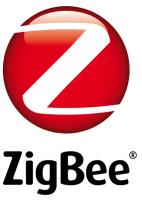| www.tmatlantic.com
Test & Soldering Equipment On-line Store |
|
D.E.V.I.C.E. (Wiki)Calculators Services |
|||||
Filter by first letter
|
ZigBee (IEEE 802.15.4)
ZigBee is the only standards-based wireless technology designed to address the unique needs of low-cost, low-power wireless sensor and control networks in just about any market. Since ZigBee can be used almost anywhere, is easy to implement and needs little power to operate, the opportunity for growth into new markets, as well as innovation in existing markets, is limitless. Consumer, business, government and industrial users rely on a variety of smart and easy-to-use ZigBee standards to gain greater control of everyday activities. With reliable wireless performance and battery operation, ZigBee gives the freedom and flexibility to do more. The ZigBee specification, officially named ZigBee 2007, offers full wireless mesh networking capable of supporting more than 64,000 devices on a single network. It’s designed to connect the widest range of devices, in any industry, into a single control network. The ZigBee specification has two implementation options or Feature Sets: ZigBee and ZigBee PRO. The ZigBee Feature Set is designed to support smaller networks with hundreds of devices in a single network. The ZigBee PRO Feature Set is the most popular choice of developers and the specification used for most Alliance developed standards. It maximizes all the capabilities of the ZigBee Feature Set, plus facilitates ease-of-use and advanced support for larger networks comprised of thousands of devices. Both Feature Sets are designed to interoperate with each other, ensuring long-term use and stability. The foundation of every ZigBee standard and specification is the powerful IEEE 802.15.4 physical radio standard operating in unlicensed bands worldwide at 2.4GHz (global), 915Mhz (Americas) and 868Mhz (Europe). It delivers raw data throughput rates of 250Kbs at 2.4GHz (16 channels), 40Kbs at 915Mhz (10 channels) and 20Kbs at 868Mhz (1 channel). Transmission distances are remarkable for a low-power solution, ranging from 10 to 1,600 meters, depending on power output and environmental conditions, such as other buildings, interior wall types and geographic topology. ZigBee Alliance, www.zigbee.org |
Site mapPrivacy policyTerms of Use & Store PoliciesHow to BuyShippingPayment




|

























